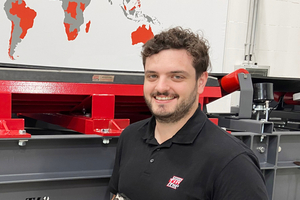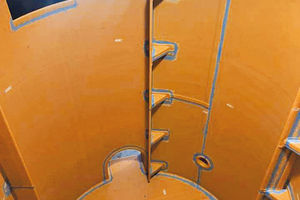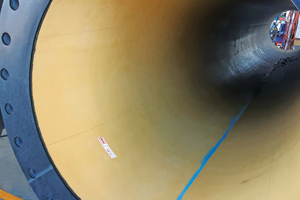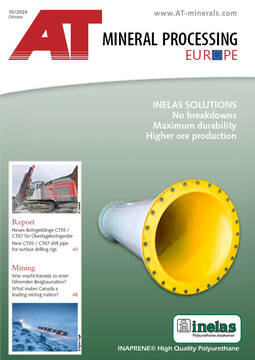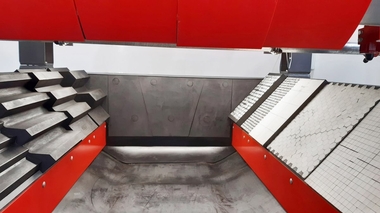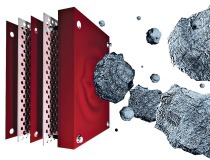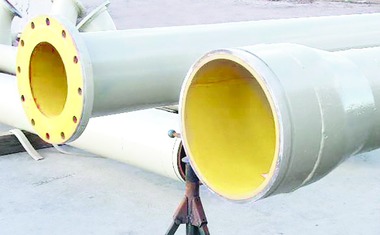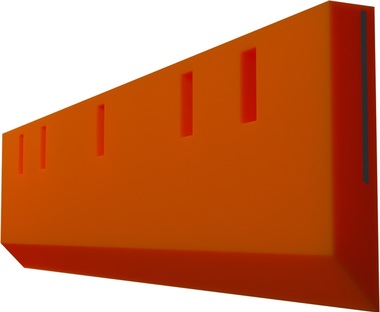Rubber for effective wear protection in conveyor systems
Which particular challenges are involved in conveying lightweight materials?
Rico Harting: When processing round grains and sticky materials such as sand, gravel or clay, abrasion and caking occur on the surfaces of system components. The greater the wear, the shorter theservice life of the plant because repair and maintenance work disrupts operation. Downtime is expensive, so the challenge for plant operators is to effectively protect critical points such as transfer points against wear. Depending on the conveyed material, caking must also be avoided with the help of suitable surface coverings. Last but not least, avoiding noise also plays an important role when conveying light materials in order to protect the health of employees and the environment.
What role does rubber play in protecting against wear nowadays?
Rico Harting: Rubber has become an indispensable material for protecting against surface wear in the conveying of light and medium-weight materials. In addition to high abrasion resistance, rubber offers a number of advantages that make it the material of choice for lightweight applications in piping, hoppers, chutes, cyclones and many other conveyor components. Rubber is a resilient material that absorbs impact energy very well, further reducing dust and noise generation. Compared to other wear-resistant materials, rubber is also very light and highly resistant to corrosion, for example, even under difficult conditions. It is very easy to install as it can be flexibly cut to size and bonded.
What are the differences between the various wear protection systems?
Rico Harting: Various types of rubber in different Shore hardnesses are used for rubber linings in the form of mats and sheets with and without fabric reinforcement. Reinforcement with fabric is recommended if, for example, wear protection elements are to be bolted in place. The fabric gives the rubber the necessary strength to prevent screws from tearing. Rubber grades of different Shore hardness are used depending on the mechanical load: Softer grades with 45 to 50 Shore A and less tend to be used in wet areas, e.g. sand and gravel. In quarries, on the other hand, harder types of rubber are used. Last but not least, there are types of rubber that are suitable for special applications: Acrylonitrile butadiene rubber (NBR) offers high resistance to fats and oils, chloroprene rubber (CR) is self-extinguishing when used underground, to name just two examples.
What needs to be considered when using rubber for wear protection?
Rico Harting: The most important rule when designing wear protection is as simple as it is obvious, but often not sufficiently taken into account: The materials used and the type of components must match the specific requirement. The most important criteria when assessing wear are the conveying speed, the drop height and impact angle at transfer points and the material throughput in tons per hour or per load. In addition, the general conditions during conveying play an important role: temperature, contact with chemicals, oils or greases, moisture content and composition of the bulk material, etc. Based on this information, we at REMA TIP TOP determine the requirements for wear protection in each specific case and develop the optimum solution together with our customers.
What advice do you have for companies that want to optimize their wear protection?
Rico Harting: If you want to sustainably reduce downtimes due to wear in your system, you should regularly examine the situation using the above criteria. Only by critically analyzing and evaluating weaknesses it is possible to identify potential for improvement and take appropriate countermeasures: How can the service life be effectively increased? How can shutdown management be improved? How can noise pollution for employees and the environment be reduced? In these cases, it is recommended that experts are brought on board to provide an objective view of the situation in order to actively address critical wear points. The experienced experts from REMA TIP TOP analyze the situation directly on site if desired and identify potential improvements and solutions for wear protection.

